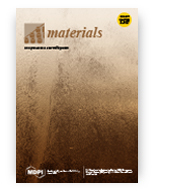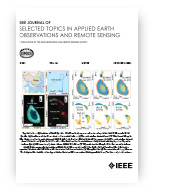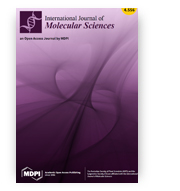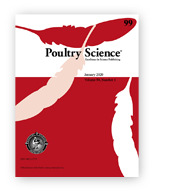Analysis of Spatial Distribution of Sediment Pollutants Accumulated in the Vicinity of a Small Hydropower Plant
Paweł Tomczyk, Bernard Gałka, Mirosław Wiatkowski, Bogna Buta, Łukasz Gruss
Energies
 Hydropower plants affect the distribution and composition of sediments. The main aim of this study was to analyze the spatial distribution of sediment pollution in the vicinity of a small hydropower plant. The grain composition of the sediments, the content of heavy metals (Cu, Ni, Cr, Zn, Pb, and Cd) and select physicochemical properties (pH, electrolytic conductivity) were tested at 14 points upstream and downstream of the hydropower plant on the Ślęza River in Poland, as well as at reference point. The interactions between the tested parameters were also verified. The results of the conducted analysis show that hydropower plants significantly affect the composition and properties of sediments. Large amounts of sediment are deposited on damming weirs, accumulating heavy metals and other substances. The differences in the concentrations of elements were significant, and Cu, Ni, Cr, Zn and Pb were 8.74, 9.53, 3.63, 8.26 and 6.33 times higher, respectively, than the median value at points upstream of the hydropower plant than downstream. It was shown that the tested parameters of the sediments interact with each other and are correlated; heavy metals showed a synergistic effect, while other parameters configurations showed an antagonistic effect. The higher content of heavy metals upstream of the hydropower plant resulted from the presence of finer sediment—classified as silt—in this section. Downstream of the hydropower plant, there were mainly sands, which showed a lower ability to absorb substances. This work contributes to improving the rational management of the worldwide issue of sediments within dams located in river valleys. Moreover, it is in line with the 2030 Sustainable Development Goals adopted by the United Nations, particularly in the fields of clean water and sanitation, clean and available energy, and responsible consumption and production.
Hydropower plants affect the distribution and composition of sediments. The main aim of this study was to analyze the spatial distribution of sediment pollution in the vicinity of a small hydropower plant. The grain composition of the sediments, the content of heavy metals (Cu, Ni, Cr, Zn, Pb, and Cd) and select physicochemical properties (pH, electrolytic conductivity) were tested at 14 points upstream and downstream of the hydropower plant on the Ślęza River in Poland, as well as at reference point. The interactions between the tested parameters were also verified. The results of the conducted analysis show that hydropower plants significantly affect the composition and properties of sediments. Large amounts of sediment are deposited on damming weirs, accumulating heavy metals and other substances. The differences in the concentrations of elements were significant, and Cu, Ni, Cr, Zn and Pb were 8.74, 9.53, 3.63, 8.26 and 6.33 times higher, respectively, than the median value at points upstream of the hydropower plant than downstream. It was shown that the tested parameters of the sediments interact with each other and are correlated; heavy metals showed a synergistic effect, while other parameters configurations showed an antagonistic effect. The higher content of heavy metals upstream of the hydropower plant resulted from the presence of finer sediment—classified as silt—in this section. Downstream of the hydropower plant, there were mainly sands, which showed a lower ability to absorb substances. This work contributes to improving the rational management of the worldwide issue of sediments within dams located in river valleys. Moreover, it is in line with the 2030 Sustainable Development Goals adopted by the United Nations, particularly in the fields of clean water and sanitation, clean and available energy, and responsible consumption and production.
DOI:10.3390/en14185935
Local Effects of a 1940 nm Thulium-Doped Fiber Laser and a 1470 nm Diode Laser on the Pulmonary Parenchyma: An Experimental Study in a Pig Model
Maciej Janeczek, Zbigniew Rybak, Anna Lipińska, Jolanta Bujok, Albert Czerski, Maria Krystyna Szymonowicz, Maciej Dobrzyński, Jacek Świderski, Bogusława Żywicka
Materials
 The lungs are a common site of metastases from malignant tumors. Their removal with a minimal but safe tissue margin is essential for the long-term survival of patients. The aim of this study was to evaluate the usefulness of a 1940 nm thulium-doped fiber laser (TDFL) and a 1470 nm diode laser (DL) in a pig model of lung surgery that involved the incision and excision of lung tissue. Histopathological analysis was performed on days 0 and 7 after surgery. Neither TDFL nor DL caused significant perioperative or postoperative bleeding. Histological analysis revealed the presence of carbonized necrotic tissue, mixed fibrin–cellular exudate in the superficial zone of thermal damage and bands of deeper thermal changes. The mean total width of thermal damage on day 0 was 499.46 ± 61.44 and 937.39 ± 109.65 µm for TDFL and DL, respectively. On day 7, cell activation and repair processes were visible. The total width of thermal damage was 2615.74 ± 487.17 µm for TDFL vs. 6500.34 ±1118.02 µm for DL. The superficial zone of thermal damage was narrower for TDFL on both days 0 and 7. The results confirm the effectiveness of both types of laser in cutting and providing hemostasis in the lungs. TDFL caused less thermal damage to the lung parenchyma than DL.
The lungs are a common site of metastases from malignant tumors. Their removal with a minimal but safe tissue margin is essential for the long-term survival of patients. The aim of this study was to evaluate the usefulness of a 1940 nm thulium-doped fiber laser (TDFL) and a 1470 nm diode laser (DL) in a pig model of lung surgery that involved the incision and excision of lung tissue. Histopathological analysis was performed on days 0 and 7 after surgery. Neither TDFL nor DL caused significant perioperative or postoperative bleeding. Histological analysis revealed the presence of carbonized necrotic tissue, mixed fibrin–cellular exudate in the superficial zone of thermal damage and bands of deeper thermal changes. The mean total width of thermal damage on day 0 was 499.46 ± 61.44 and 937.39 ± 109.65 µm for TDFL and DL, respectively. On day 7, cell activation and repair processes were visible. The total width of thermal damage was 2615.74 ± 487.17 µm for TDFL vs. 6500.34 ±1118.02 µm for DL. The superficial zone of thermal damage was narrower for TDFL on both days 0 and 7. The results confirm the effectiveness of both types of laser in cutting and providing hemostasis in the lungs. TDFL caused less thermal damage to the lung parenchyma than DL.
DOI:10.3390/ma14185457
Riparian Wetland Mapping and Inundation Monitoring Using Amplitude and Bistatic Coherence Data From the TanDEM-X Mission
Magdalena Mleczko, Marek Stanisław Mróz, Magdalena Fitrzyk
IEEE Journal of Selected Topics in Applied Earth Observations and Remote Sensing
 This article focuses on bistatic coherence as an additional feature complementing amplitudes in classification space, permitting to monitor temporal changes in water extent on the wetland comprising surface water and inundated vegetation. The research was conducted on a herbaceous wetland. The TanDEM-X images were acquired during the science phase in bistatic mode with long perpendicular baselines. Two different sets of observations were computed: polarimetric amplitudes (PAs) and interferometric coherences in single-pass mode. Next, the datasets composed of a multitemporal stack of images were classified using object-based image analysis. The main outcome of the experiment is that bistatic coherences increased greatly the overall accuracy (OA) of expected thematic classes. The OA shows that thematic categories were classified with higher accuracy when the bistatic coherence complemented PAs. The OA is greater than 85% for all analyzed datatakes. The accuracy achieved using amplitudes only was higher than 70% but varied overtime. The bistatic coherence at X-band turned out to be really helpful in mapping high vegetation, which can be an indicator that this methodology can be directly used in the monitoring of common reed mowing or mapping highly invasive vegetation. Additionally, we could observe that short inundated vegetation was also mapped correctly, allowing flooded areas in this floodplain to be mapped with great precision throughout the growing season.
This article focuses on bistatic coherence as an additional feature complementing amplitudes in classification space, permitting to monitor temporal changes in water extent on the wetland comprising surface water and inundated vegetation. The research was conducted on a herbaceous wetland. The TanDEM-X images were acquired during the science phase in bistatic mode with long perpendicular baselines. Two different sets of observations were computed: polarimetric amplitudes (PAs) and interferometric coherences in single-pass mode. Next, the datasets composed of a multitemporal stack of images were classified using object-based image analysis. The main outcome of the experiment is that bistatic coherences increased greatly the overall accuracy (OA) of expected thematic classes. The OA shows that thematic categories were classified with higher accuracy when the bistatic coherence complemented PAs. The OA is greater than 85% for all analyzed datatakes. The accuracy achieved using amplitudes only was higher than 70% but varied overtime. The bistatic coherence at X-band turned out to be really helpful in mapping high vegetation, which can be an indicator that this methodology can be directly used in the monitoring of common reed mowing or mapping highly invasive vegetation. Additionally, we could observe that short inundated vegetation was also mapped correctly, allowing flooded areas in this floodplain to be mapped with great precision throughout the growing season.
DOI:10.1109/JSTARS.2021.3054994
Two Paralogous Gb3/CD77 Synthases in Birds Show Different Preferences for Their Glycoprotein and Glycosphingolipid Substrates
Anna Bereźnicka, Krzysztof Mikołajczyk, Katarzyna Szymczak-Kulus, Katarzyna Kapczyńska, Edyta Majorczyk, Anna Modlinska, Tomasz Piasecki, Radosław Kaczmarek, Marcin Czerwiński
International Journal of Molecular Sciences
 Most glycosyltransferases show remarkable gross and fine substrate specificity, which is reflected in the old one enzyme-one linkage paradigm. While human Gb3/CD77 synthase is a glycosyltransferase that synthesizes the Galα1→4Gal moiety mainly on glycosphingolipids, its pigeon homolog prefers glycoproteins as acceptors. In this study, we characterized two Gb3/CD77 synthase paralogs found in pigeons (Columba livia). We evaluated their specificities in transfected human teratocarcinoma 2102Ep cells by flow cytofluorometry, Western blotting, high-performance thin-layer chromatography, mass spectrometry and metabolic labelling with 14C-galactose. We found that the previously described pigeon Gb3/CD77 synthase (called P) can use predominately glycoproteins as acceptors, while its paralog (called M), which we serendipitously discovered while conducting this study, efficiently synthesizes Galα1→4Gal caps on both glycoproteins and glycosphingolipids. These two paralogs may underlie the difference in expression profiles of Galα1→4Gal-terminated glycoconjugates between neoavians and mammals.
Most glycosyltransferases show remarkable gross and fine substrate specificity, which is reflected in the old one enzyme-one linkage paradigm. While human Gb3/CD77 synthase is a glycosyltransferase that synthesizes the Galα1→4Gal moiety mainly on glycosphingolipids, its pigeon homolog prefers glycoproteins as acceptors. In this study, we characterized two Gb3/CD77 synthase paralogs found in pigeons (Columba livia). We evaluated their specificities in transfected human teratocarcinoma 2102Ep cells by flow cytofluorometry, Western blotting, high-performance thin-layer chromatography, mass spectrometry and metabolic labelling with 14C-galactose. We found that the previously described pigeon Gb3/CD77 synthase (called P) can use predominately glycoproteins as acceptors, while its paralog (called M), which we serendipitously discovered while conducting this study, efficiently synthesizes Galα1→4Gal caps on both glycoproteins and glycosphingolipids. These two paralogs may underlie the difference in expression profiles of Galα1→4Gal-terminated glycoconjugates between neoavians and mammals.
DOI:10.3390/ijms22189761
SNP prioritization in targeted sequencing data associated with humoral immune responses in chicken
Tomasz Suchocki, Bartosz Czech, Aleksandra Dunisławska, Anna Sławinska, Natalia Derebecka, Joanna Wesoly, Maria Siwek, Joanna Szyda
Poultry Science
 Our study aimed to identify single nucleotide polymorphisms (SNPs) with a significant impact on the innate immunity represented by antibody response against lipopolysaccharide (LPS) and lipoteichoid acid (LTA) and the adaptive immune response represented towards keyhole limpet hemocyanin (KLH) using the SNP prioritization method. Data set consisted of 288 F2 experimental individuals, created by crossing Green-legged Partridgelike and White Leghorn. The analysed SNPs were located within 24 short genomic regions of GGA1, GGA2, GGA3, GGA4, GGA9, GGA10, GGA14, GGA18, and GGZ, pre-targeted based on literature references and database information. For the specific antibody response toward KLH at day 0 the most highly prioritized SNP for additive and dominance effects was located on GGA2 in the 3’UTR of MYD88. For the response at day 7, the most highly prioritized SNP pointed at the 3’UTR of MYD88, but three potential causal additive variants were located within ADIPOQ and one in PROCR. The highest priority for additive and dominance effects in the antibody response toward lipoteichoic acid at day 0 was attributed to the same SNP, located on GGA2 in the 3’UTR region of MYD88. Two SNPs among the top-10 for additive effect were located in the exon of NOCT. SNPs selected for their additive effect on antibody response toward lipopolysaccharide at day 0 marked three genes – NOCT, MYD88, and SNX8, while SNPs selected for their dominance effect marked – NOCT, ADIPOQ, and MYD88. The top-10 variants identified in our study were located in different functional parts of the genome. In the context of causality three groups can be distinguished: variants located in exons of protein coding genes (ADIPOQ, NOCT, PROCR, SNX8), variants within exons of non-coding transcripts, and variants located in genes’ UTR regions. Variants from the first group influence protein structure and variants from both latter groups’ exhibit regulatory roles on DNA (UTR) or RNA (lncRNA).
Our study aimed to identify single nucleotide polymorphisms (SNPs) with a significant impact on the innate immunity represented by antibody response against lipopolysaccharide (LPS) and lipoteichoid acid (LTA) and the adaptive immune response represented towards keyhole limpet hemocyanin (KLH) using the SNP prioritization method. Data set consisted of 288 F2 experimental individuals, created by crossing Green-legged Partridgelike and White Leghorn. The analysed SNPs were located within 24 short genomic regions of GGA1, GGA2, GGA3, GGA4, GGA9, GGA10, GGA14, GGA18, and GGZ, pre-targeted based on literature references and database information. For the specific antibody response toward KLH at day 0 the most highly prioritized SNP for additive and dominance effects was located on GGA2 in the 3’UTR of MYD88. For the response at day 7, the most highly prioritized SNP pointed at the 3’UTR of MYD88, but three potential causal additive variants were located within ADIPOQ and one in PROCR. The highest priority for additive and dominance effects in the antibody response toward lipoteichoic acid at day 0 was attributed to the same SNP, located on GGA2 in the 3’UTR region of MYD88. Two SNPs among the top-10 for additive effect were located in the exon of NOCT. SNPs selected for their additive effect on antibody response toward lipopolysaccharide at day 0 marked three genes – NOCT, MYD88, and SNX8, while SNPs selected for their dominance effect marked – NOCT, ADIPOQ, and MYD88. The top-10 variants identified in our study were located in different functional parts of the genome. In the context of causality three groups can be distinguished: variants located in exons of protein coding genes (ADIPOQ, NOCT, PROCR, SNX8), variants within exons of non-coding transcripts, and variants located in genes’ UTR regions. Variants from the first group influence protein structure and variants from both latter groups’ exhibit regulatory roles on DNA (UTR) or RNA (lncRNA).
DOI:10.1016/j.psj.2021.101433









